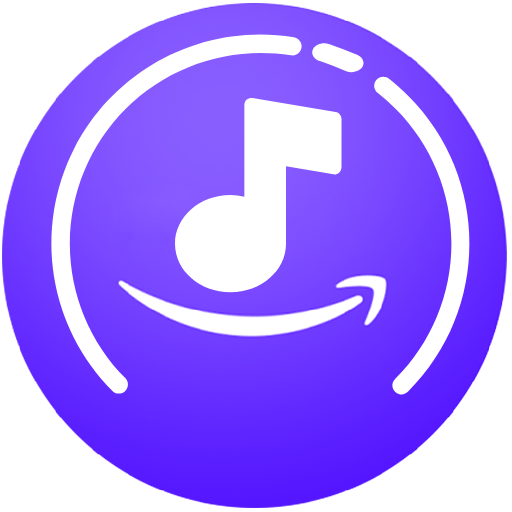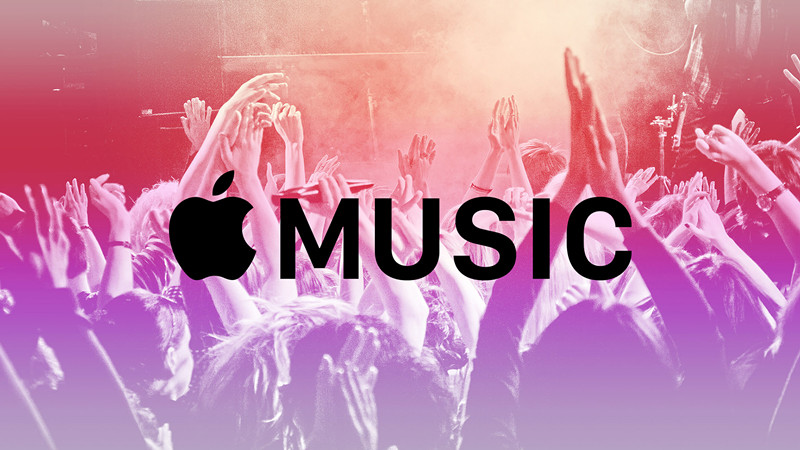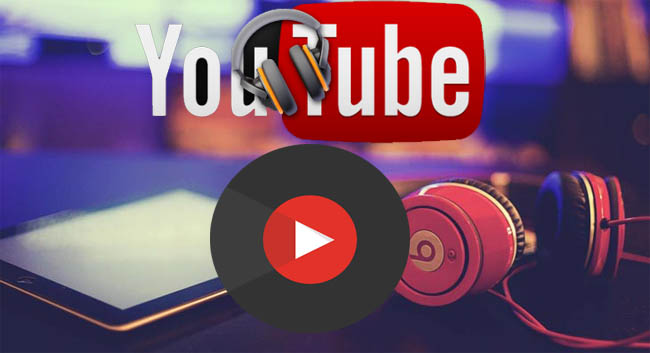
Remove Apple Music DRM protection; Convert Apple Music to MP3, M4A,etc.

Download Spotify Music without premium; Convert Spotify Music to MP3.

Download Music from Tidal to your Computer; Convert Tidal Music to to MP3, M4A,etc.

Download Amazon Music Prime/Unlimited/HD; Convert Amazon Music to MP3.
Best Music Streaming Services: Apple vs. Spotify vs. Amazon vs. Youtube Music
By Sarah ConnorUpdated on June 11, 2018
- Summary:
Which is the best music streaming services/app? Here we compare the similarites and differences among Apple Music, Spotify, YouTube Music and Amazon Music Unlimited to helps you choose the best streaming music service that suits for you, also learn the best solution to remove DRM from Apple Music and Spotify.
There are more and more streaming music services in the market: Spotify, Apple Music, Amazon Music Unlimited, Youtube Music, Pandora, SounCloud, Google Play Music, iHeartRadio, Shazam, SiriusXM, TuneIn Radio. At present, Apple Music and Spotify, ranks as the most popular music streaming service, and recently Google is joining the streaming music competition market and will strengthen the competitiveness of Youtube Music. There are all kinds of streaming music services in the market, however, which music streaming service should we choose? This article is going to share the latest news about the different music streaming platform and the similarities & differences among Apple Music, Spotify, Amazon Music Unlimited and YouTube Music for your reference, then choose the best streaming music service.

Latest news about the most popular Music Streaming:
Google’s video site YouTube launched a new music streaming service YouTube Music.
There are two versions of YouTube Music: one with ads; the other with no ads, and costs $9.99 per month. According to foreign media, YouTube Music will compete with music services such as Apple Music and Spotify. Apple last month said that the company’s music services already have 48 million users, of which 40 million are paying users. Spotify already has 71 million paying users. YouTube Music will be first launched in the United States, Australia, New Zealand, Mexico, and South Korea, and will then enter more markets.
It is worth noting that, compared to Spotify, many digital music competitors Apple Music, Amazon Music Unlimited, and YouTube Music are more like products that combine natural entertainment video with digital music services. Its streaming media music business is launched as a single service and charged separately; it is also integrated into the video membership service as a welfare service.
1. Apple: Entering Music Publishing, Adding Music Data Products
Spotify is apparently facing increasing competition from streaming media music rivals. According to the global music finance (WME) data, Apple Music’s paying users are growing significantly faster than Spotify. In the first quarter of this year, Apple Music subscribers grew by an average of 2 million per month. Spotify has grown by 1.3 million per month. In addition, for Apple, Google, Amazon, cash reserves and market status are not a problem, they also hope that users are more dependent on its core products (related links: Apple Music “unprecedented” behind the growth: Apple’s ecological games, categories Positive collaboration with the platform).
Just after Apple Music announced that the total number of users (including paying users and free trial users) reached 50 million, it announced that it would enter the music publishing industry in May, and set up its own music publishing department, directly marking Spotify on music copyright. The sore spot.
This move of Apple Music on the one hand allows it to have a more powerful basis for licensing cooperation, more control over the content, no longer only from the perspective of the music distributor for exclusive rights to play, but also bypass the copyright of other publishers Divided into the fight, on the other hand, it opened Apple’s door to the artist’s brokerage business and stood on the publisher’s side to explore and cultivate better quality music talent resources. (At present, Apple Music has not yet signed a lyric player/ Artists, but will work with industry partners to develop music talents.
After the establishment of the Apple Music Publishing Department, the “music list” unexpectedly became the focus of Apple Music.
Under the leadership of Oliver Schusser, the new global director, Apple Music began to improve the publishing method of streaming music data, and organized a new global team responsible for data analysis and management, trying to make Apple streaming music data statistics and management more transparent and authority. In addition to launching a dedicated music rankings department, it collaborates with other music charts in the industry to share information and helps Apple understand the logic and rules of other leaderboards; Apple Music also released Apple Music for Artist for artists, as artists and their agents. Provide richer behind-the-scenes data.
According to the analysis, Apple Music is trying its best to develop music data products. On the one hand, it wants to define a set of industry-wide measurement metrics and statistical methods. It has changed Spotify’s priority as a music heat judging standard in recent years, in a data-driven manner and with all parties in the industry. Conduct business negotiations; at the same time, it is also creating a clearer commercialization strategy for its music charts and other products to form a unique list and strive for more C-end users.
Some commentators indicated that, perhaps in the near future, Apple Music will become a record company and rank among the major brands. At present, Apple Music has assumed the dual status of publishing and distribution, plus the blessings on original videos, playback equipment and technology. The loyal users, Apple’s development in streaming music is still worth a look.
2. YouTube: Separately launched streaming media music services to simultaneously develop music video content
YouTube Music was also re-launched as a separate service in May and is integrated with past Google Play Music for a monthly fee of $9.99.
This first-rate media music platform uses Google’s information resources and AI technology as selling points, and is equipped with personalized customization and voice assistant functions. At the same time, YouTube has accumulated in the MV release, entertainers, and music self-media accounts. Although the current music video only accounts for 2% of the platform’s revenue, music videos continue to account for a large proportion of the most popular TOP10 videos on the platform. Together with the related film and television content developed by the platform for popular categories, the diverse music content promotes each other and helps the platform form a fan community.
3.More US subscribers Choose Apple Music, Not Spotify
According to the newspaper, this summer, Apple Music, not Spotify, will become the top US streaming music service. Potentially unnerving Spotify’s investors, Apple Music will have the most US subscribers. Now, a new report may cement WSJ’s analysis.
People just use Apple Music more…
Apple first launched its music service just under three years ago. In that time, it has managed to reach more than half of Spotify’s global subscriber tally. Spotify reached slightly over 70 million subscribers two months ago. It first launched in late 2008.
Further cementing Apple Music’s astonishing growth, it ranked as the most popular music streaming service last month. That’s according to Verto Analytics, which recently published its Verto Index. This month, the company took a look at top streaming music properties.
With a 23% monthly reach, Apple’s music streaming service had 49.5 million monthly unique users, most of them paying subscribers. Spotify landed in second with a 22% reach, having 47.7 million users.
Interestingly, most people streamed Apple Music on their smartphones — that is, 99% of them. Only a few users their tablets, and even fewer listened on PCs or Macs.
People also read: how to steram Apple Music to Android
How to transfer Apple Music to iPhone/iPod
How to play Apple Music on MP3 player
Apple Music vs. Spotify vs. YouTube Music vs. Amazon Music Unlimited
Below, I will explain how I reached my conclusion by comparing four popular music streaming services (Apple Music vs. Spotify vs. Google Play Music vs. Amazon Music Unlimited) while evaluating five categories: music discovery, apps, compatibility, library, and bonus features.
1.Apple Music

Apple Music is stream 45 million songs, ad-free on Apple Music. Shop HomePod, AirPods, and headphones. And build your entertainment collection with iPod and iTunes.
Apple Music offers three months of free trial for its subscribers on iPhone, iPad or Mac/PC computer (with iTunes). After then subscribers will be charged $9.99 per month by default if the subscription service is not cancelled, and it also offers Family subscription ($14.99 per month) and Student discounts ($4.99 per month). After you got an Apple Music subscription, you can get unlimited ad-free music up to 45 million songs, download 100,000 songs as well as listen to Beats 1 Radio.
In additional, if you have cancelled the subscription service, Apple not allow you listen to songs anymore, even you have downloaded before, becuase Apple Music add DRM protection.
People also read: how to remove DRM from Apple Music
Discovery: They have solid human-made playlists, but the algorithms aren’t ideal.
Apps: The iOS app looks great, but the computer version uses iTunes and it’s messy.
Compatibility: It’s great with Apple Watch and HomePod, but not other smart speakers.
Library: You can upload up to 100,000 songs to iCloud to be streamed.
Bonus: There’s a 90-day free trial. It’s $5/month for students.
2.Spotify

Spotify is one of the most popular digital music service that gives you access to millions of songs, users can select playlists from 35 million songs, select artist radios to listen to your favorites, or discover the latest music through Discover Weekly.Now, there are more that 70 million subscribers and 140 million Spotify users.
Spotify provides three tiers of subscriptions: Spotify Free, Spotify Premium ($9.99/ month) and Spotify Family ($14.99/month), and specially, Spotify offers discount price for students at $4.99 per month. Spotify Free users are able to randomly online listen to songs with unlimited ad-supported, but users can’t offline listening the songs; while Spotify Premium subscribers can enjoy high-quality songs with ad-free, uers also can offline listening the songs at any time.
Since you have subscribed Spotify music service, you can only download tracks onto your desktop or mobile device to play on a Spotify application offline. But Spotify music is protected with DRM encryption, which limits you playing music in MP3 player, you can’t, because of DRM protection.So, you need to convert Spotify streaming music to MP3 and maintain the output music as same as the original quality.
People also read: how to transfer Spotify songs or playlists to iPod
Discovery: Discover Weekly and algorithmic suggestions are Spotify’s secret sauce.
Apps: Mac, iOS, and Android apps look similar and have a sleek, dark interface.
Compatibility: Works with any smart or HiFi speaker and any smartphone.
Library: You can’t upload music that’s not in Spotify’s catalog.
Bonus: They have an excellent free option and cool deals for Hulu subscribers.
3.YouTube Music

YouTube Music is a new music streaming service that will include a redesigned mobile app and a new computer-side music player. Google’s video site – YouTube, will launch the music streaming service YouTube Music on May 22, 2018. The service’s benefits will continue to be available as part of the existing YouTube Premium (formerly YouTube Red) service and Google Play Music subscribers. YouTube Music will be launched first in the United States, Australia, New Zealand, Mexico, and South Korea, and then enter more markets.
The YouTube Music subscription charged at $9.99 per month while the price of YouTube Premium will concurrently increase $2 to $11.99 for new subscribers.
Discovery: it becomes good at predicting what you want to listen to and when.
Apps: The phone app is ugly with weird cover art and bright white. No desktop app.
Compatibility: You can “cast” music to any speaker or TV with casting capabilities.
Library: You can add up to 50,000 songs from your personal library.
Bonus: You get YouTube Red for free, and there’s a free ad version of Google Play.
4.Amazon Music Unlimited

Amazon launched the new “Amazon Music Unlimited” streaming music service. Amazon’s streaming music service allows users to play tens of millions of songs, and use no advertising at all. Most importantly, compared to competitors Spotify and Apple Music, Amazon is much lower in terms of pricing, it will also focus on In the voice instruction.
Amazon Music Unlimited service offers 30-day free trial available for new subscribers only, and just $7.99/month or $79/year for Prime members ($9.99/month Non-Prime pricing) for change or cancel anytime, it also offers Family subscription ($14.99 per month). Subscribers can unlock access to tens of millions of songs and listen ad-free with unlimited skips, and members can also download for offline listening.
Discovery: They have limited radio stations and playlists with bad curation.
Apps: The phone app is similar to Apple but more confusing. The desktop version is bad.
Compatibility: It works best with Echo devices.
Library: You can’t upload your old songs to Amazon as you previously could.
Bonus: It’s only $8/month for Amazon Prime members or $4 for the “Echo Plan.”
The subscription fees for each of the streaming music service mentioned above are similar, at about $10 / month . But they differ from each other in many ways, such as popularity, music library, audio quality, music discovery, advertising situation. Next we will give you some suggestions, you choose the suitable platform for you.
Streaming Music Platform Recommendations
1.For Popularity
When it comes to subscribers, the undisputed king of on-demand streaming music is Spotify. The Swedish-born service helped pioneer the current market and has tens of millions more paying subscribers than the competition, not to mention countless millions more free users. But Apple Music, known for its high-level exclusive releases and full integration into Apple’s popular iOS ecosystem, is the hottest service on Spotify’s heels. Apple’s streaming service has shown impressive growth in listenership since its inception, garnering about half the number of Spotify’s paying users, now up to about 40 million monthly subscribers since it went live in June 2015 — nine years behind Spotify.
2.For Music Library
Spotify first gained its dominant position on the strength of its impressive 30 million-plus song catalog. Couple this with the fact that it adds more than 20,000 new songs each day, and the service offers more music than your ears even know what to do with. While several holes do exist in its library, Spotify’s catalog is extremely deep, and even onetime holdout Taylor Swift eventually conceded her protest. The Swedish streaming service also brings all the latest record releases, exclusive live sessions, and various new singles right to its New Releases tab each Friday, providing a great way to hear the latest from established artists and rising stars alike. (Just stroll through our favorite Spotify playlists for a sense of the size is the catalog.)
Apple’s service touts around 40 million songs, however, which is superior to Spotify’s “30 million-plus” figure (though we’re not sure by how much), and also outdoes newer contenders like Amazon’s paid streaming service and Jay-Z’s Tidal. Moreover, Apple has taken steps to secure many more exclusives than the competition, largely because it doesn’t offer a free tier. The Swedish streaming giant isn’t too happy with artists signing exclusivity deals with Apple, either; Spotify reportedly has a history of altering search rankings for artists who release their music through Apple first.
3For Music Discovery
With so many songs at the ready, streaming libraries can seem daunting for those who want to find new music, but Spotify provides a lot of useful tools for finding new songs to suit your individual taste. Playlists like Release Radar, New Music Friday, and Monday’s personalized Discover Weekly provide fantastic opportunities for subscribers to latch on to new music from artists they never stumbled across on their own. The program’s deep well of dozens of base genres to choose from makes new music ripe for the picking, and other personalized playlists like Daily Mixes are constantly being added to the mix. Spotify even has a featured series called Secret Genius, which allows fans of pop music to listen to the songwriters behind some of their favorite hits.
Free users will be able to take advantage of these playlists, too, with up to 15 on-demand (meaning not shuffled) playlists to choose from daily. That adds up to about 40 hours of new music in total every day. These lists are curated based on a questionnaire you fill out when you sign up for a free account that asks you to choose your favorite artists.
4For Recommendations
However, it seems that YouTube Music, positioned to be a more direct competitor to Spotify and Apple Music, will make the best recommendations because it has been following your YouTube viewing history and Google searches.
In conclusion, if you want to enjoy free streaming music, Spotify is the best choice. If you want to have listen to more songs, Apple Music is the perfect one, and if you need the best recommendations with no idea what to listen to, YouTube Music and Amazon Music Unlimited is worth trying.
Apple Music and Spotify Music DRM Removal Tool You May Need
Streaming muisc is protected with DRM encryption. Unlike MP3 music which supports to download offline and listen with only one-time fee, Apple Music and Spotify has DRM copyright protection and it requires you to pay the subscription fee on annual basis to continue to enjoy the music. This means you don’t really own the music. If you stop the payment or cancelled the subscription service, it not allow you play the songs unless you pay the subscription fee again. What is worse, even if you have paid for the service, you can’t get full use of them due to the DRM protection, or you can’t transfer them to other devices for playing offline. For example, you can’t download Apple Music on iPod, iPod Nano, iPod Shuffle or other MP3 players offline, as there is no Apple Music app supported for it, iPod is unlike other iOS devices which Apple can authenticate an active Apple Music subscription via Apple Music app and Wi-Fi; you can’t listening Apple Music or Spotify on Car media players; you can’t keep songs downloaded from Apple Music and Spotify forever…. Here are the solution that we collected for you:
- How to Convert Apple Music to MP3
- How to Remove DRM from Spotify Premium Music and Playlist
- How to Convert and Transfer Apple Music Songs to iPod
- How to Download Music from Spotify Music with Spotify Free/Premium?
- How to Transfer Apple Music to USB and Play in Car Offline?
- How to Transfer Apple Music Songs to USB
- How to Move your Spotify playlists to Apple Music
- How to Transfer Apple Music to Spotify?
- How to Transfer Apple Music to Samsung Galaxy
Comments
Prompt: you need to log in before you can comment.
No account yet. Please click here to register.

- Save Downloaded Apple Music Forever
- Apple Music DRM Removal
- Convert Apple Music Songs to MP3
- Convert iTunes M4P to MP3
- Play Apple Music without Subscription
- iTunes Music DRM Removal
- Play Apple Music on Any Devices
- Keep Apple Music Forever
- Play Apple Music on iPod nano/shuffle
- Play Apple Music on MP3 player
- iPod Won't Sync Apple Music
- Play Apple Music on Samsung
- Transfer Apple Music to iPhone
- Sync Apple Music to Android
- Burn Apple Music Songs to CD
- Set Apple Music Song as Ringtone


No comment yet. Say something...